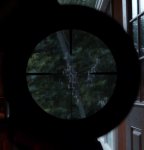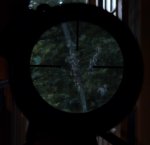Thank you Joe, I have read Ilya's reviews which I too have found to be very informative.
So you're saying the March 3-24x42 is just as good as both the Steiner and S&B 5-25x56 up to 12x? If this is the case then that truly is impressive from March indeed.
I see your point here, and yes, I understand the German glass gets darker too, there is no scope that I know of that does not as all scopes suffer from light transmission issues especially as the ambient light in the given environment is at lower than optimal brighness (e.g. Sunrise/Sunset). If my post were titled "Light weight, high magnification tactical scope options" then I think there would be little doubt that the March would be at or near the top of this list. But we are not debating (at least I am not) light weight alone, as I want both light weight AND low light and it is the low light ability of the March that has me concerned. If the March were a 3-24x56 scope and came in under 30 oz then I might seriously consider it, but whenever anybody is looking for a low light scope a 42mm objective would not be the first to come to mind unless it is a 3-9x or 2.5-10x and the like.
When you think low light you think big objective lens, this also translates into photography, if I am going to be shooting in environments with little ambient light then I will be looking to my f/2.8 zooms and not the consumer grade f/3.5~5.6; as that F stop directly translates into how much light that lens can bring to the sensor, if it's really dark I need to look beyond f/2.8 and now look at some f/2 or bigger (the lower the f stop number the bigger the aperture which translates to the size of the font objective divided by the focal length which is why a 300mm f/4 lens has roughly a 75mm front objective as 75mm x 4 = 300. Now the big f/2.8 zooms diverge from this because it is based on the highest magnification setting and the lens design actually alters the size of the effective front objective in order to keep the constant f stop throughout the entire zoom range, and this is also why you'll see rifle scope manufacturer's listing different exit pupils at the low and high end of the magnification range than what the formula for the exit pupil actually is (main objective diameter divided by the magnification) and that is because every manufacturer optimizes their lens design with zoom lenses. With a zoom lens you actually have glass elements moving around inside the scope creating different optical effects (and in our case mostly the difference in the magnification range) but this effect also has side affects which can alter, in this case, the effective diameter of the main objective. For example, the Premier LT 3-15x50mm should have an exit pupil from 16.67mm at 3x to 3.33mm at 15x; however, Premier lists their exit pupil size as 11.5mm at 3x to 3.5mm at 15x, what does this tell us, it tells us that Premier had to compromise with their optical design in order to achieve their goal of 3-15x magnification which resulted in a less than optimum exit pupil at 3x (and by less than optimum I mean for the capability of the optical system, not for what is effective for the human eye) but a decent exit pupil of 3.5mm at 15x which appears to be 1.6mm larger than the calculated exit pupil (that being said, sometimes manufacturer's like to do rounding and other funny measurements to make their products look more impressive).
I digress and apologize for I keep getting pulled into discussing optical properties when I am not an expert; however, I am trying to apply what I do know with the situation at hand and that is why I keep coming back to this.
Is the March 3-24x42mm a fantastic tactical scope? I have little doubt that it is, but once you tack on the criteria of "low light" then I don't think it is fair to say that the March is a "fantastic low light tactical scope" unless you plan on using the scope at only around 6-8x max when the light begins to fade. As the poster TorF mentioned at the beginning of this thread in his review of the Zeiss Victory HT 3-12x56, he gets an extra 30-60 minutes of usable light with this scope over his S&B, NF and Leupolds. Now it would be interesting to know which Schmidt and Nightforce optics he has to compare this to, but that is impressive indeed to consider 30-60 extra minutes in the morning and the evening over some of the best scopes out there.
My main goal here is to find a scope that can perform dual duty as both a hunting scope and a tactical scope. My desire when starting this thread was to get some ideas from other hide members of what optics are out there that meet both a light weight (under 30 oz) requirement, will perform better in low light situations and have a minimum magnification of 15x. I have since been convinced that 12x will probably get the job done for me as well which is why I've opened my search up to include various 3-12x scopes as well.
You should read the 2 articles from the link I posted, part II and III. The March goes head to head with Hensoldt 4-16x56, Steiner 4-16x50, S&B 4-16x50, USO 3.2-17x44, Premier Light Tactical 3-15x50, NF F1 3-15x50, and some others.
Some highlights from the articles;
"In terms of overall mechanical quality, to me, March still has the most polished feel of any scope I have tried to date, but the others are not far behind."
"Suffice to say that this is the third March scope I have been able to thoroughly test and all three have been consistently superb. Low and wide knobs offer 10 mrad per turn operation and a very simple-to-set zero stop. Side focus is silky smooth with illumination built into it as a rubberized push button. "
"March had the least flexible eye relief, which is not surprising considering its smaller objective lens and overall compactness. I suppose that is a part of the compromise. Either way, none of these scopes gave me any particular trouble with eye relief on any rifle I tried them on."
"Optically, March is as good as or better than any scope I have seen to date that has the same size objective lens. Even in this group, it performed very well up until the point where it was limited by the smallish exit pupil. Up until then, it had slightly better resolution and slightly lower contrast than the other scopes here."
"High Magnification Resolution: March = Premier LT = S&B > Steiner"
"Low Magnification Resolution: March = Premier LT = Steiner >= S&B"
"With exit pupil not a factor (i.e. at lower magnifications, below 7x or so), March showed the most detail, edging out Hensoldt, S&B and Premier by a very small margin and surpising the hell out of me in the process."
"Once a few point light sources were introduced, the pecking order did not change a whole lot, but I did make a few worthwhile observations. At first I tested all of the scopes without sunshades, and then experimented with sunshades a bit (I did not technically have sunshades for all of these scopes, but I made same makeshift ones out of opaque black optical paper). First of all, with bright light sources in the picture, US Optics SN-3 promptly fell out of contention with the other four scopes here. It had noticeable flare and various stray light artefacts induced by light sources both inside and outside the Field of View. March and S&B were the least effected. Honestly, to my considerable surprise, I could not simulate any sort of a challenging lighting setup that would have an appreciable effect on the March. In this case, smaller objective lens actually helps, but still the March performed better than I expected and, honestly, better than any scope I have seen to date. "
"If you are willing to open up your wallet, in my mind it comes down to March 3-124x42FFP, Hensoldt 4-16×56 and Premier 3-15×50. Between these three the choice comes down to the application and your personal preferences.
For example, I am putting together an accurate AR-15 chambered for 264LBC. It will likely take me out to 1000 yards in reasonable comfort. However, the rifle itself will be fairly trim and not too heavy, so I would like a moderately trim scope for it. For this application, the March is the one to beat, and I am trying to figure out how I can afford it."
Now, I cherry picked here, but any areas where the March suffers compared to other larger heavier alpha with bigger objectives and overall packages scopes have already been widely discussed.
Just back from shooting with the Steiner and the March again.
I love both of them, but they are so different in character.
If your friend says his S&B is inferior optically to his Zeiss, I'd say he got a bad one. S&B's issues have never been with their optical quality, and the only Zeiss beating out an S&B in the brightness dept. is a Hensoldt.
Joe



